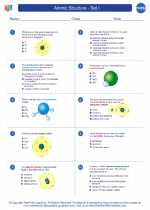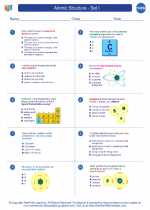Rotational Motion
Rotational motion is the movement of an object around an axis. It is a fundamental concept in physics and is relevant in various fields such as engineering, astronomy, and sports. Understanding rotational motion is crucial for comprehending the behavior of objects in circular motion, such as wheels, propellers, and planets.
Key Concepts
When studying rotational motion, it's important to grasp the following key concepts:
- Angular Displacement: The change in angle as an object rotates.
- Angular Velocity: The rate of change of angular displacement with respect to time.
- Angular Acceleration: The rate of change of angular velocity with respect to time.
- Moment of Inertia: The resistance of an object to changes in its rotational motion.
- Torque: The measure of the force that can cause an object to rotate about an axis.
Equations
Several equations are used to describe rotational motion, including:
1. Angular Displacement:
θ = s / r
Where θ is the angular displacement, s is the arc length, and r is the radius of the circular path.
2. Angular Velocity:
ω = Δθ / Δt
Where ω is the angular velocity, Δθ is the change in angular displacement, and Δt is the change in time.
3. Angular Acceleration:
α = Δω / Δt
Where α is the angular acceleration, Δω is the change in angular velocity, and Δt is the change in time.
4. Torque:
τ = r * F * sin(θ)
Where τ is the torque, r is the lever arm, F is the force applied, and θ is the angle between the force and the lever arm.
Study Guide
To effectively study rotational motion, follow these steps:
- Understand the basic concepts of circular motion and the differences between linear and rotational motion.
- Familiarize yourself with the units of measurement for rotational motion, such as radians and degrees.
- Practice solving problems involving angular displacement, velocity, and acceleration.
- Learn about the moment of inertia and its significance in rotational motion.
- Explore the relationship between torque, force, and rotational motion, and solve related problems.
- Utilize resources such as textbooks, online tutorials, and practice problems to reinforce your understanding.
By mastering the principles of rotational motion and practicing related problems, you can develop a strong foundation in this important area of physics.
.◂Chemistry Worksheets and Study Guides High School. Atomic Structure - Set I

 Worksheet/Answer key
Worksheet/Answer key
 Worksheet/Answer key
Worksheet/Answer key
